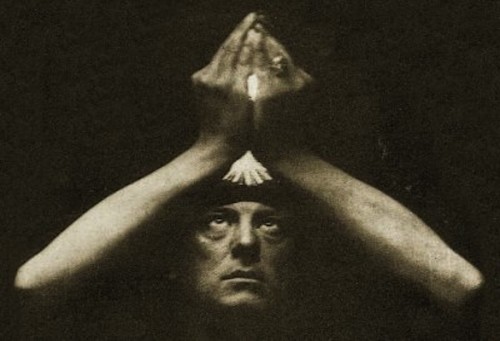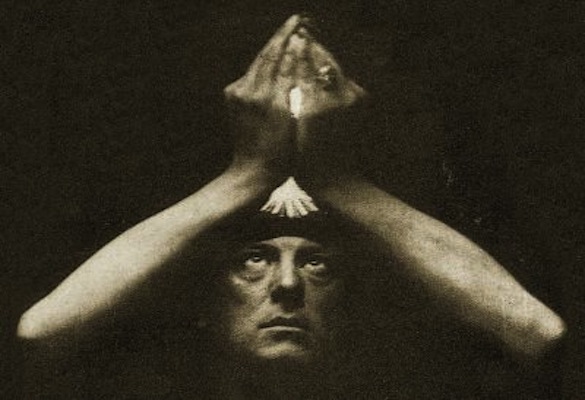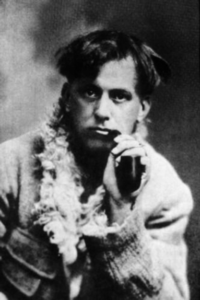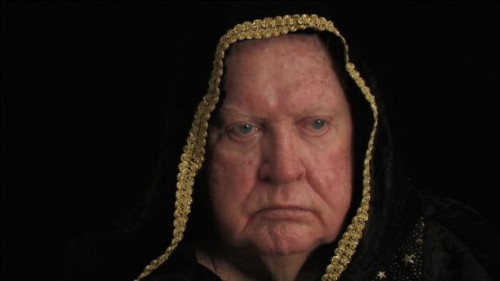
Way back in the 20s and 30s, many Londoners were convinced that the city was cursed. By what you say? King Tut of course!
It so happens that the tomb of the boy king was first uncovered by British archaeologist Howard Carter. This is where the alleged Curse of Tutankhamun“>curse of Tutankhamen started.
Done deal, right? Wrong! Apparently there was more to it than just a silly curse. That more allegedly came in the form of Aleister Crowley who was a well known nutjo….I mean, occultist in the late 19th and early 20th century.
Historian Mark Beynon contends in his new book that Crowley was in fact obsessed with Jack The Ripper and subsequently became a copycat serial killer.
Mr. Beynon who had access to a great deal of unpublished works including Crowley’s diary, has drawn some startling parallels between the Ripper and Crowley.
Read on as Beynon talks about the murders he credits to Crowley as well as some other interesting details:
Curse of Tutankhamun may have been work of Satanist killer
Six mysterious London deaths famously attributed to the ‘Curse of Tutankhamun’ were actually murders by notorious Satanist Aleister Crowley, a historian claims in a new book.
Incredible parallels between Crowley and Jack the Ripper have also been discovered during research by historian Mark Beynon.
Throughout the 1920s and 1930s, London was gripped by the mythical curse of Tutankhamun, the Egyptian boy-king, whose tomb was uncovered by British archaeologist Howard Carter.
More than 20 people linked to the opening of the pharaoh’s burial chamber in Luxor in 1923 bizarrely died over the following years – six of them in the capital.
Victims included Carter’s personal secretary Captain Richard Bethell, who was found dead in his bed from suspected smothering at an exclusive Mayfair club.
Bethell’s father Lord Westbury then plunged seven floors to his death from his St James’s apartment, where he reportedly kept tomb artefacts gifted by his son.
And Aubrey Herbert, half-brother of Carter’s financial backer Lord Carnarvon, also died suspiciously in a Park Lane hospital shortly after visiting Luxor.
At the time, a frenzied Press blamed the ‘Curse of Tutankhamun’ for the deaths and speculated on the supernatural powers of the ancient Egyptians.
But Mr Beynon has now drawn on previously unpublished evidence to conclude the deaths were all ritualistic killings masterminded by Crowley, an occultist dubbed “the wickedest man in the world”.
After unique analysis of Crowley’s diaries, essays and books and inquest reports, the armchair detective argues that he was a Jack the Ripper-obsessed copycat killer.
Crowley, who called himself ‘The Great Beast’, apparently had his own motives to tarnish the legacy of Carter’s legendary discovery.
The gods and goddesses of Crowley’s own religious philosophy, Thelema, were mainly drawn from ancient Egyptian religion.
He believed himself to be a prophet of a new age of personal liberty, controlled by the ancient Egyptian god Horus.
It is likely that he would have found Carter’s excavation sacrilegious and wanted revenge, according to Mr Beynon.
In his new book ‘London’s Curse: Murder, Black Magic and Tutankhamun in the 1920s West End’, published this week by The History Press, Mr Beynon pins seven deaths on Crowley, six of which took place in London:
– Raoul Loveday (16 February 1923): the 23-year-old Oxford undergraduate was a follower of Crowley’s cult at a Sicilian abbey. He died on the same day at the very hour of Carter’s much-publicised opening of Tutankhamun’s burial chamber. He died after drinking the blood of a cat sacrificed in one of Crowley’s rituals and Mr Beynon argues that he was deliberately poisoned.
– Prince Ali Kamel Fahmy Bey (10 July 1923): a 23-year-old Egyptian prince shot dead by his French wife of six months, Marie-Marguerite, in London’s Savoy Hotel shortly after he was photographed visiting the tomb. Mr Beynon says that Crowley and Marie-Marguerite had been lovers in Paris. She was working as a hostess at the Folies Bergère and he was a regular patron at the same venue. He suggests that Crowley put her up to the shooting.
– Aubrey Herbert (23 September 1923): shortly after Marie-Marguerite’s acquittal, Aubrey Herbert, the half-brother of Lord Carnarvon, died of blood poisoning after a routine dental operation went suspiciously wrong at his private hospital in Park Lane. He had only recently returned from his own trip to Luxor. Mr Beynon speculates that Crowley was behind the death and may again have used Marie-Marguerite to do his dirty work.
– Captain Richard Bethell (15 November 1929): Howard Carter’s 46-year-old personal secretary was found dead in his bed at Mayfair’s exclusive Bath Club. Bethell was said to have been in perfect health. It was initially thought that he died of a heart attack but his symptoms raised suspicion that he was smothered to death as he slept. Crowley had only recently returned to London and was often a guest of novelist W. Somerset Maugham at the club.
– Lord Westbury (20 February 1930): Bethell’s father, Lord Westbury, 77, was believed to have thrown himself off his seventh floor St James’s apartment. But Mr Beynon found that it was practically impossible for an elderly man to have climbed out onto the window ledge and suggests that Crowley threw him off.
– Edgar Steele (24 February 1930): only four days later, Edgar Steele, 57, who was in charge of handling the tomb artefacts at London’s British Museum, died at St Thomas’ Hospital after a minor stomach operation. Mr Beynon speculates that Crowley was behind the death.
– Sir Ernest Wallis Budge (23 November 1934): A former Keeper in the British Museum’s Department of Egyptian and Assyrian Antiquities, he was found dead in his bed in Bloomsbury aged 77. A friend of Lord Carnarvon, he had been responsible for displaying the artefacts from Luxor. Mr Beynon says there is evidence that Budge and Crowley were associates on the London occult scene.
Crowley, who was born into a wealthy upper class family in 1875, had a controversial doctrine for life of ‘Do What Thou Wilt’.
The bisexual heroin addict gained notoriety for advocating sexual promiscuity and prostitution and was dubbed ‘the wickedest man in the world’ by the Press.
Mr Beynon paints a picture of a dangerous schizophrenic known to have murdered his servants in India.
Crowley never mentions the deaths in his diaries but often wrote that his mood had “lifted” the day after them.
He was obsessed with Jack the Ripper, writing numerous essays and poems about him.
He socialised with Ripper suspect Walter Sickert and Mr Beynon argues that Crowley used the Ripper’s killing spree as inspiration for his own efforts years later.
Crowley wrote in his diaries that he believed the locations of five of the Ripper’s murders in Whitechapel in 1888 formed a pentagram – an important star-shaped symbol in Satanism.
Mr Beynon claims that the locations of five of Crowley’s ‘murders’ form a copycat pentagram.
Crowley believed that the Ripper’s murders had afforded him special powers, including invisibility.
Mr Beynon says that he thought his murders would also render him invisible.
To test his theory, he famously walked through London’s Café Royal restaurant ridiculously dressed in a mustard-coloured cloak adorned with occultist symbols.
When customers fell silent and were too perturbed to speak to him, he assumed they could not see him.
Outlining his macabre theory, Mr Beynon said: “When I researched these deaths, Crowley’s name popped up again and again.
“There is plenty of circumstantial evidence linking him to all the deaths and his diaries and books are riddled with clues linking him to these crimes.
“I have just put all the pieces of the jigsaw together.
“So much of Crowley’s belief system was steeped in ancient Egypt.
“He would have seen the opening of Tutankhamun’s tomb as desecration.
“This was a man given to extensive world travel and yet we know he was in London when at least four of the six deaths occurred.”
He added: “I hope the book will appeal to anyone with an interest in crime or London history.
“I was fascinated researching London in the 20s and 30s.
“On the surface, it was very glitzy and glamorous but there was a dark underbelly that provided the ideal stage for this story.
“Everyone was obsessed with the supposed striking down high society victims.
“But until now, no-one has ever realised that they may well have been murdered.”
Source: The Telegraph
This is quite a revelation but could it be true? Maybe Beynon is just looking to cash in here. What better way to do it than by drawing on two of the most famous historical figures in the history of London?
To use a common poker term, I’d say Beynon is going all in here. What do you the reader think?
28 comments






